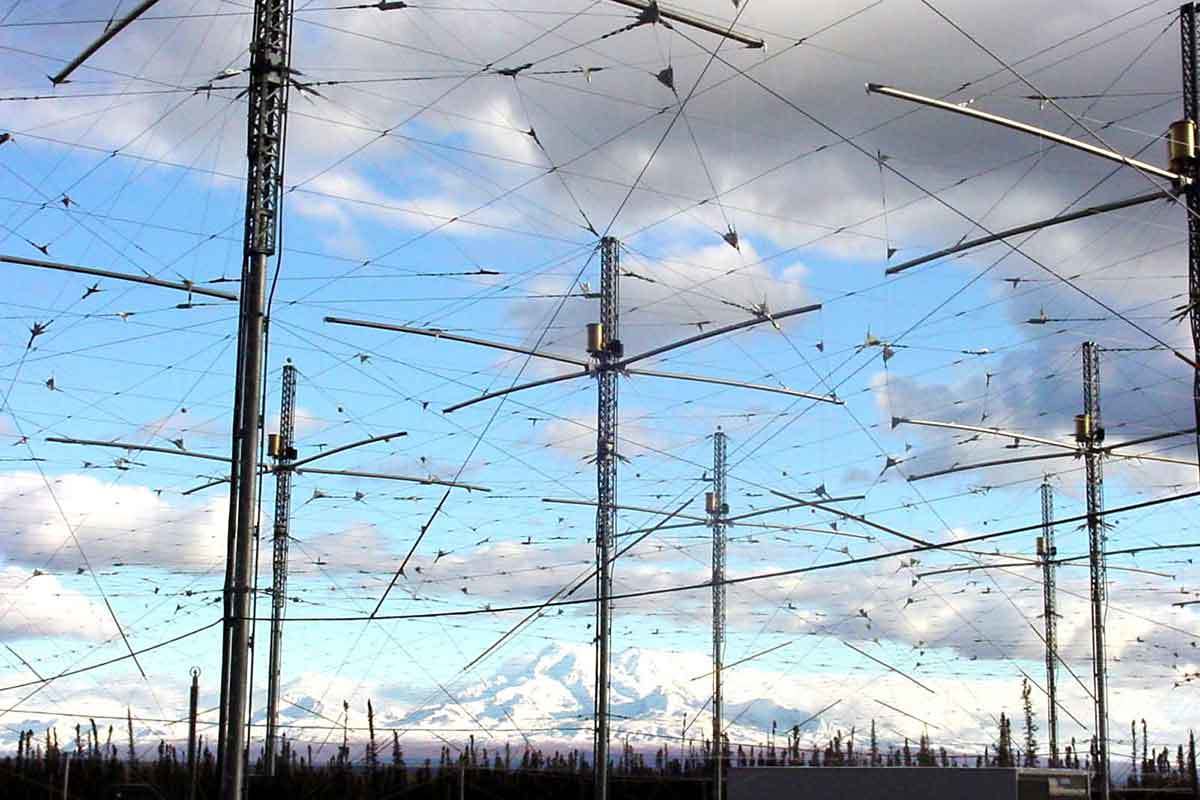US wants to slightly stimulate the Earth’s ionosphere with plasma bombs
To improve radio communication

Swarm of CubeSat microsatellites. Photo: NASA
Many radio amateurs know that radio reception is much better at night than during the day. After sunset, you can receive clear sound from those radio stations that are generally not received during the day. Even from those that are hundreds of kilometers away.
The reason for the phenomenon is that at night, short waves are better able to reflect from the ionosphere - the upper layer of the atmosphere, strongly ionized due to irradiation by the sun. If the range of stable communication in the conditions of direct visibility is 70 km, then the ionosphere works as a kind of signal amplifier, significantly increasing the distance.
The ionosphere begins at an altitude of about 60 km, it consists of a mixture of gas of neutral atoms and molecules (mainly nitrogen N 2 and oxygen O 2 ) and a quasineutral plasma, in which the number of negatively charged particles is only approximately equal to the number of positively charged ones.
At night, the density of the ionosphere increases, which explains the better quality of radio signal reception. But why not try to achieve such an effect during the day if it is necessary for military and civilian purposes?
Such an idea came to engineers from the US Air Force. Now they are developing plans for the plasma bombardment of the upper layers of the Earth’s atmosphere with CubeSat microsatellites.
Satellites should ionize the atmosphere, improving the density of the ionosphere and its reflective properties.
Generally speaking, this is not the first attempt to improve the reflective qualities of the ionosphere in order to increase the range of radars and radio communications, writes New Scientist. Such an attempt was made within the framework of the HAARP (High Frequency Active Auroral Research Program) program - "Programs for the study of auroras by high-frequency exposure." The project was launched in the spring of 1997 in Alaska, where they built a grid of antennas, incoherent radiation radar with a twenty-meter-diameter antenna, laser locators, magnetometers, computers for signal processing and antenna field control. The whole complex was powered by a powerful gas power station and six diesel generators.

Antenna Field Polar aurora research programs with high-frequency effects in Alaska - the first attempt to influence the Earth’s ionosphere. Photo: US Air Force / 2nd Lt. J. Elaine Hunnicutt
Apparently, the project was not very successful. In May 2014, United States Air Force spokesman David Walker said that the command was no longer going to support the installation. It was decided to close the station finally, and the engineers were instructed to further develop other ways of stimulating the ionosphere.
Microsatellite bombardment is one of these new options.
Tiny CubeSat 10 centimeters cubic microsatellites can be scattered at an altitude of 60 km in large quantities. They are capable of releasing large amounts of ionized gas (plasma) directly into the ionosphere.
Such a plasma screen, according to the US Air Force, can be used not only to increase the range of radio communications, but also to block the signal from foreign satellites (this possibility is expected to be studied), as well as to reduce the negative impact of the solar wind (this is generally a semi-fantastic option).
The plan of American engineers has at least two technological problems. First, how to fit the plasma generator into a miniature satellite volume measuring 10x10x10 cm. Secondly, how to control the emission of plasma.
To solve these technical problems, the USAF allocated grants to three private companies. From the proposed options will be chosen the best solution. It will be checked first in a vacuum chamber, and then during a research space mission, before a decision is made on the mass bombardment of the ionosphere by such satellites.
General Sciences, with researchers from the University of Drexel (Philadelphia), is working on a chemical reaction method that can be used to heat a metal to its boiling point. The metal vapor will react with atmospheric oxygen and ionize the gas.
Enig Associates, together with physicists from the University of Maryland, offers a more radical approach, although the basic concept is the same. But they want to quickly heat up the metal by detonating a small bomb, turning the energy of an explosion into electrical energy. In this case, you can control the shape of the clouds of ionized gas, controlling the direction of the explosion.
So far, the projects are at a very early experimental stage. In fact, we are only taking the first steps in studying the use of man-made plasma to modify the earth's ionosphere. Independent scientists say that it will be an extremely difficult task to fit a sufficiently powerful source of energy into such a small volume of a satellite to generate enough ionized gas. The difficulties that confront researchers may prove insurmountable.
Scientists also doubt that microsatellites are able to somehow reduce the influence of the solar wind, which blows the entire Earth completely. This can be compared with an attempt to stop the sea storm with separate protective blocks.
In any case, this is a very interesting attempt to somehow influence nature.
